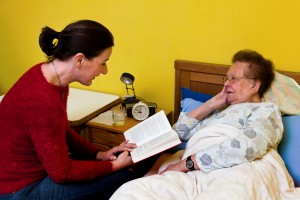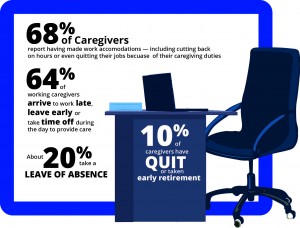The Background
Mary has been essentially bedridden for two years. She suffers from osteoporosis and moderate rheumatoid arthritis. She is eighty one years old and has four grown children that are all in their fifties. Three of the four children live nearby and Mary is still living in the same home that she and her husband bought 40 years ago. Mary’s oldest child, Ruth, is her only daughter and she lives just two blocks away. The three nearby children essentially take turns caring for Mary in her home and employ a part time home care assistant. Mary has visited several nursing home facilities and absolutely refuses that option. She also has sizeable assets and wants to make sure she leaves something for her children and doesn’t want to spend any more money than she has to on herself.
The Challenges
While Ruth loves her mother, the bulk of Mary’s care and coordination falls on her since she lives the closest. The other two nearby children provide a considerable amount of help which does give Ruth some relief. Because of her condition and her existing home, Mary hasn’t been able to take a normal bath for well over a year.
since she lives the closest. The other two nearby children provide a considerable amount of help which does give Ruth some relief. Because of her condition and her existing home, Mary hasn’t been able to take a normal bath for well over a year.
The Obstacles:
- Mary absolutely refuses to go to a nursing home and aside from her physical conditions, is mentally acute and active.
- Mary lives in an area where nursing home costs are very high. The average in her area for a nice facility that Ruth approves of is over $140,000 annually. That would exhaust all of Mary’s assets in three years requiring her to move to a different facility that would be paid for by Medicaid.
- Ruth has said many times that she would rather have her mom just move in with her but Ruth lives in a two story home. Also, Ruth’s husband who is seven years older than her, is starting to encounter some physical problems.


 Ruth called Better Living Express to ask questions and learn more about her options. Her FACS Advisor reviewed the situation she described. A call was arranged between Ruth, the other two sibling care givers and the part time home care assistant. After the call, the FACS Advisor continued to work with Ruth on a solution. After several family meetings led by Ruth, it was determined that the best solution was to build an addition onto Ruth’s home and have Mary move in with her. The option they chose provided the following benefits:
Ruth called Better Living Express to ask questions and learn more about her options. Her FACS Advisor reviewed the situation she described. A call was arranged between Ruth, the other two sibling care givers and the part time home care assistant. After the call, the FACS Advisor continued to work with Ruth on a solution. After several family meetings led by Ruth, it was determined that the best solution was to build an addition onto Ruth’s home and have Mary move in with her. The option they chose provided the following benefits: